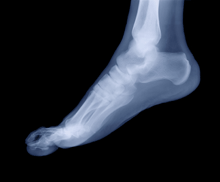Research Matters
|
Search Research Matters
|
October 6, 2008 New Genes Linked to GoutResearchers have identified 2 new genes—and confirmed the role of a third—that are associated with increased risk of higher levels of uric acid in the blood, which can lead to gout, a common, painful form of arthritis.  Nearly 3 million adults in the United States are estimated to have gout. Gout can develop when excess amounts of uric acid build up in the blood and form crystals. These crystals accumulate in joints to cause swelling and pain. Gout often first affects the joints of the big toe, but many other joints can also be affected. Left untreated over time, gout can permanently damage affected joints. A high level of uric acid in the blood, which is also a risk factor for kidney stones, is heritable. A team of researchers in the United States and the Netherlands set out to identify which genes are associated with blood uric acid levels and gout. They did a genome-wide association study, which involves scanning the genomes of large numbers of people to find genetic variations associated with a particular disease. Their work was supported by NIH's National Heart, Lung and Blood Institute (NHLBI) and the Netherlands organization for scientific research (NWO). The researchers used data from 2 large studies, scanning the genetic variations of nearly 7,700 participants in NHLBI's Framingham Heart Study and more than 4,100 participants in NWO's Rotterdam Study. The researchers then confirmed their finding using data from nearly 14,900 participants in NHLBI's Atherosclerosis Risk in Communities Study. The team reported in the online edition of The Lancet on September 30, 2008, that 3 genes were associated with uric acid concentration and gout. All 3 are thought to play a role in how the kidney processes and excretes uric acid. Combined, the genetic variants are associated with up to a 40-fold increased risk in developing gout. These findings will help researchers to study how uric acid is processed in the kidney and to develop strategies for preventing and treating gout. Genetic testing could also one day be used to identify people at risk for gout before symptoms develop, as well as help determine who would benefit from medications to prevent its development. Related Links:
This page was last updated
October 6, 2008
.
|



